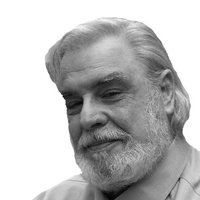Many Irishmen arrived in California during the California Gold Rush. Among them was the brawny Patrick Manogue (pronounced “Manigan”) — “Paddy” to his friends, one of seven orphaned children.
Born in County Kilkenny in 1831, the young man left college and emigrated to the United States, landing in the gold fields in Moore's Flat, California. Many disputes occurred among the prospectors in the mining camp, and Manogue was never one to turn his back on a donnybrook. Although only in his early 20s, he stood a muscular six feet, four inches tall. A fair man, Paddy Manogue was often asked to arbitrate these disputes.
While prospecting by day, he studied philosophy and theology by night. Within four years Paddy had money enough, even after providing for his family in Ireland, to pay his way through Saint Sulpice Seminary, Paris.
In 1860, the Marysville vicariate was established by Blessed Pius IX. It included all of Northern California and most of what was then the Nevada Territory, with Bishop Eugene O'Connell in charge. Aware of his mining camp background, the bishop snagged the newly ordained Fr. Patrick Manogue in 1862 to pastor the many Irish families coming to Virginia City during the boom years of the Comstock Lode and its vast silver deposits.
Fr. Manogue’s vast rural missionary field was strenuous, but members of his flock were impressed with his dedication and finely honed sense of humor. The priest soon brought over the Daughters of Charity to help out. The frame church he built upon his arrival — called St. Mary in the Mountains, taking into account the beautiful, snowcapped sentinels surrounding Virginia City — had become too small for the burgeoning city’s prosperous Catholic citizens. They gladly supplied funds to build a larger St Mary’s on a site one street away. In 1870, Bishop O’Connell arrived to dedicate the new church as he had the first.
Then disaster struck.
In October 1875, a fire started in “Crazy Kate’s” Boarding House. Gusting winds swept down the mountains, blowing embers across town, eventually reaching St. Mary’s. The Blessed Sacrament, some statues and fixtures were saved before the church interior was gutted by the flames.
Once again, Fr. Manogue rebuilt his church. It was the height of the “Big Bonanza” on the Comstock Lode, and the wealth of the silver mine paid for the rebuilding of Virginia City. St. Mary’s became an opulent, brick structure in the Gothic style; the mother of all Catholic churches in Nevada.
In 1880, Fr. Manogue was called by his friend, Bishop O’Connell, to be his coadjutor bishop for the Diocese of Grass Valley. In 1884, Bishop Manogue succeeded his mentor as the second and last diocesan bishop of Grass Valley. In 1886, Pope Leo XIII merged that diocese into the newly erected Diocese of Sacramento, with Manogue its founding bishop.
Starting in 1887, Bishop Manogue called on an old friend from Moore’s Flat, John Mackay, to spearhead the building of the Cathedral of the Blessed Sacrament. Mackay had discovered the Comstock Lode and was the richest man in the world.
At his passing in 1895, after speaking of the many friends the bishop made and the legacy of churches, hospitals and schools built for Sacramento, the San Francisco Morning Call of Feb. 28 noted:
During his priesthood he was looked upon by Catholics and others as a man of noble character, who always had a pleasant word or good advice for all with whom he came in contact. He was a large man of great energy and endurance. He was active in his labors and had [a] gentleness of tone … when he spoke words of cheer to the disheartened and sick. He was pastor of St. Mary's at Virginia at the time of the fire in 1875, and his courage and bravery on that occasion are the subject of one of the many pleasant stories that are related by his friends as evidence of his great worth, both as priest and citizen.
Yours Journalistically came across the remarkable Patrick Manogue quite by accident, watching an episode of “Death Valley Days” titled “The West Side of Heaven,” originally broadcast on May 1, 1964.
Steve Cochran portrayed Fr. Manogue as a two-fisted priest finding resistance from Virginia City’s rough mining crews to his upholding morality. Facing ridicule as a “Papist in a turn-around collar,” he gains respect by handily defending himself from attack by a smarmy gambler who had blasphemed the Holy Cross.
When a fire starting in an arm of the Comstock mine threatens the city, it is determined that, if the weakening ground below the church could be made to fall into the tunnel, it would smother the fire. Following a moment of prayer, Fr. Monague OK’s the church’s demolition by dynamite. A giant hole opens with the ground and church falling in. This allows the fire to be extinguished. One of the men who’d been taunting the priest joins him surveying the ruins of the church.
“You know,” he begins ruefully, “I’m, a carpenter, I’d like to help rebuild the church.”
Fr. Manogue takes his hand with a wry smile. “Fine,” he replies. “I have a great respect for carpenters.”
It’s a fine story with a neat punchline and it’s been around for over a century. But it never happened. Descriptions of the ruins seen after the fire would be impossible if the church had been dynamited.
All other details, as near as I can tell, are true.
Sean M. Wright, MA, award-winning essayist, Emmy nominee and Master Catechist for the Archdiocese of Los Angeles, is a parishioner at Our Lady of Perpetual Help in Santa Clarita. He answers comments at [email protected].














